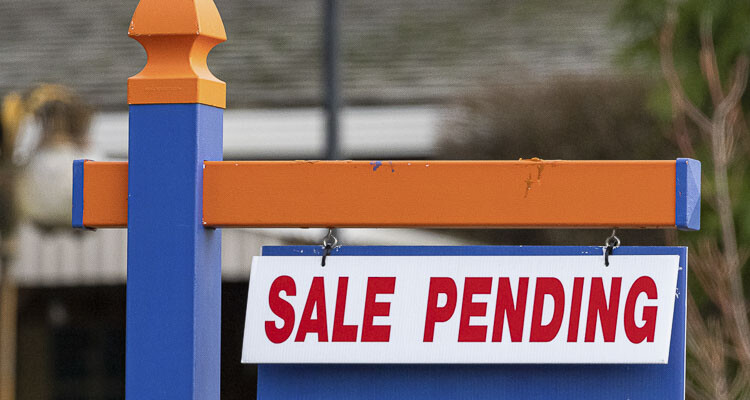
Among them is the multifamily tax exemption program created following passage of the Growth Management Act
TJ Martinell
The Center Square Washington
As Washington continues to experience a severe housing affordability crisis, state legislators may finetune some existing tax incentive programs to encourage greater development.
Among them is the multifamily tax exemption program created following passage of the Growth Management Act. Implemented at the local level, the tax exemption makes development more affordable upfront while delaying tax revenue otherwise collected. Since 2019, 35,000 residential units have been produced through the MFTE program.
However, it’s not been enough to keep up with demand.
“We’ve been talking to local cities who tell us that they’re really starting to get concerned about their budgets, because they’re not seeing those housing starts, which means that they are going to have to make some really hard choices about how to make their budgets work over the next few years,” Director of Sustainable Development Angela Rozmyn with Natural and Built Environments told the Senate Housing Committee at its Tuesday meeting.
According to her presentation, the state needs 60,000 homes built annually, but so far have only 30,000 created.
She added, “The good news is though, is that when we do build housing, that means we have billions of dollars across the state and to the cities to pay for things like our infrastructure and our parks and our schools.”
The MFTE program allows for developers to have an exemption on the residential portion of property taxes, depending on how many “affordable units” are included in the development. An eight-year MFTE program does not have state-level requirements for affordable housing, though some local governments do. A 12-year MFTE program requires at least 20% of housing units for “low and moderate income” households, which is considered either 80% of area median income, or 115% of AMI, respectively.
Natural and Built Environments Manager and CEO Robert Pantley told the Senate Housing Committee that the MFTE “is the right step in the right direction to reduce the cost of housing so that people can afford it.”
Yet, he noted that increased interest rates, now sitting at 7.63%, have made the cost of building loans higher. To get more housing built, “we have to attract the kind of investment to get there,” he said. “A lot of states have not done that. California is…a state that has lost hundreds of thousands of people. I don’t think we want to follow that path. Let’s be very aggressive. Let’s figure out how to get a lot more housing.”
The state recently allowed for 20-year MFTE for permanent affordable housing for projects with 25% affordable housing, but the project must be done by a nonprofit or government agency. However, some builders want to see that option made available for private sector projects.
Rozmyn told the Senate Housing Committee that “when you have a 12-year MFTE, it isn’t quite enough when it comes to financing to equal out, but when you go out to 20 years, you get past the length of the loan. There is a depreciation of that housing over 20 years, and once you get to that 20 year mark it’s enough.”
She added that “you’ll hear a lot from developers saying that that can’t happen, that there’s no number that’s good enough, but we’ve dug into these numbers enough and feel quite strongly that a 20-year MFTE can be tied to forever affordability and financially that can work.”
One of the offsets of the MFTE is that it “can result in either a loss of tax revenue to the community, or a tax shift where other property owners will pay more in taxes,” according to the state Department of Commerce. “Regular updates can be necessary to make sure the program provides a sufficient incentive to maximize public benefits.” At the same time, Rozmyn noted that the state gets no tax revenue when a development doesn’t occur.
“Balancing that public and private investment is an art,” Housing Programs Manager Anne Fritzel told the Senate Housing Committee.
In its MFTE study released in August, Commerce concluded that “there is potential for 12-year extensions to help with long-term affordability” and that the MFTE “can be used in tandem with other housing incentives and programs to boost length and depth of affordability.”
The study also found that government staff tasked with handling the MFTE programs lacked expertise in real estate finance, “which limits complete evaluations of the financial feasibility of a development” and that there “are no consistent methodologies available to evaluate the financial impacts of MFTE programs.”
This report was first published by The Center Square Washington.
Also read:
- WA governor pressed to veto $1.8B piece of Democrats’ tax billGrocers and restaurateurs are urging Gov. Ferguson to veto a surcharge in HB 2081 that they say will raise food prices statewide.
- CCSO makes arrest in attempted kidnapping investigationA 31-year-old Vancouver man has been arrested in connection with an attempted kidnapping involving a teenage girl near NE 149th Street.
- Changing roles: Brian Witherspoon accepts position as head coach of Camas girls basketballBrian Witherspoon has been hired to lead the Camas girls basketball program after serving as interim boys coach last season.
- Vehicle crashes into Vancouver Fire Station 6 during emergency responseA vehicle crashed into Vancouver Fire Station 6 late Tuesday night while crews were out on an emergency call.
- Letter: ‘It’s said sarcasm is the lowest form of wit’Amboy resident Thomas Schenk criticizes Olympia’s use of “emergency clauses” and other legislative tactics that limit public participation.
- Letter: ‘We’re going to give them some money and a plane ticket, and then we’re going to work with them’Camas resident Anna Miller supports a new structured self-deportation policy, calling it a balanced approach to immigration and economic needs.
- Pro-Palestinian protesters occupy UW building, 30 arrestedAbout 30 protesters were arrested at the University of Washington after occupying a building and demanding the school cut ties with Boeing.











